Halsall Rectory & Rectors
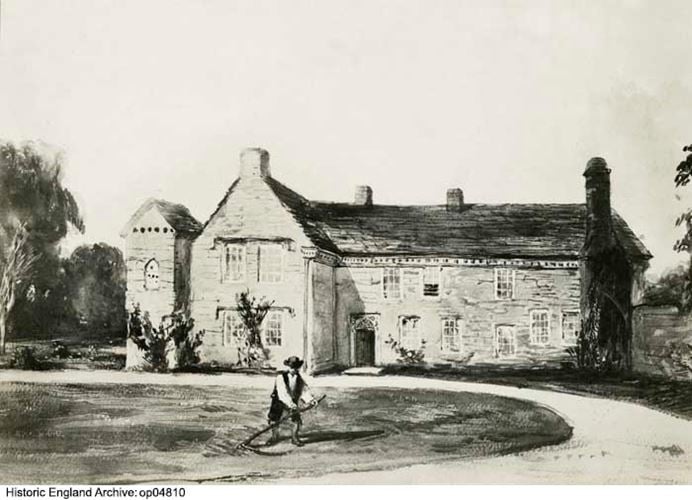
.Historic England has this, c. 1900 image of the medieval rectory on its Scheduled Monuments website. This drawing is from History of County of Lancaster Vol3 which is available as an internet archive e-book.
From this source, Footnote 74 reports that in the will of Thomas Johnson, a Rector at Halsall until 1660 he describes the ‘parsonage’ as containing up to 19 rooms including chambers, a hall, buttery, brewhouse, kitchen and study although it is not clear if this is in Halsall as he owned other properties.
A list of the Rectors of Halsall from 1190 AD is available. Here we will link the more recent Rectory buildings to the Rectors that occupied them using the 1841 to 1939 Census reports.
Introduction
The history of St Cuthbert’s Church in Halsall is well documented with written records going back to the 12th Century. The earliest recorded Rector of Halsall is Robert of 1190. What is less well documented is the history of the priest’s house, the Rectory.
There are three buildings in Halsall known as a Rectory.
- Ruins of medieval rectory, priest’s house or “Halsall Abbey”
- Halsall House
- The Old Rectory, opposite the Church
Due to name changes, road name changes and varying titles in different sources it is best to consider them as Rectory 1, 2 and 3
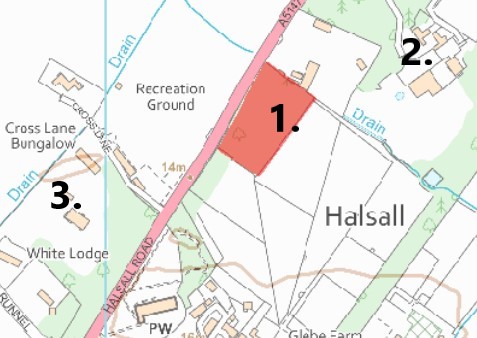
The ruins of Rectory 1 are located in the woods, north east of St Cuthbert’s Church. Rectory 2 at Halsall House is further north, and Rectory 3 is to the west, closer to the Church which is at the bottom of the map.
The current (2025) rectory for St Cuthbert’s Church is in Lydiate.
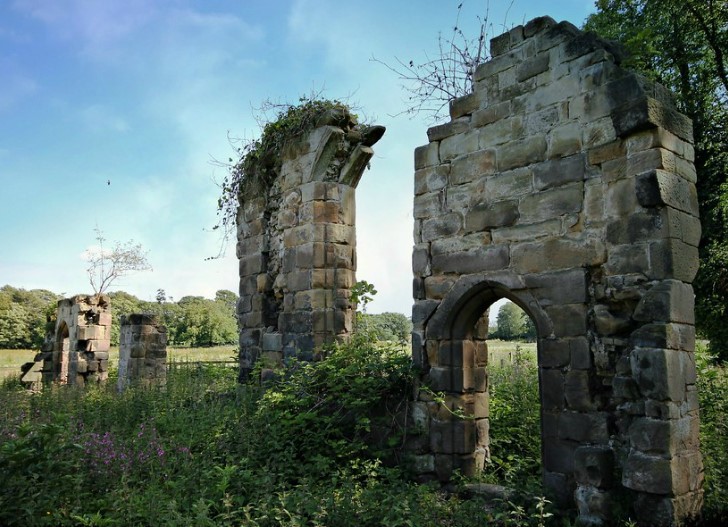
1. Medieval Rectory
Historic England has two entries for the medieval rectory , as a Scheduled Monument and as a Listed Grade II Building.
The Historic England website contains a detailed description of the standing ruins. In summary there is one long wall remaining, upto 5m high, broken into sections. Some of the stone work suggests it is 14th/15th century in origin. Other remains suggest it was amended in 18th/19th century when it was fashionable to have ancient ruins, or a folly, in an estate garden.
University of Liverpool has conducted archaelogical research on the site . There are other stones on the surface which suggest there maybe more extensive buried features.
British Listed Buildings also has an entry with several excellent photos of the site. Although the photos are identified as uploaded in 2025, the context suggests they were taken c. 2021 before the site was securely fenced.
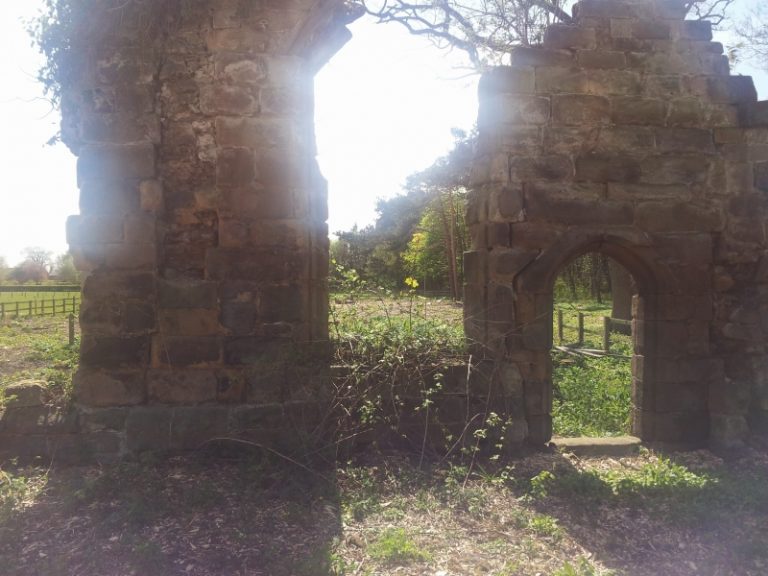
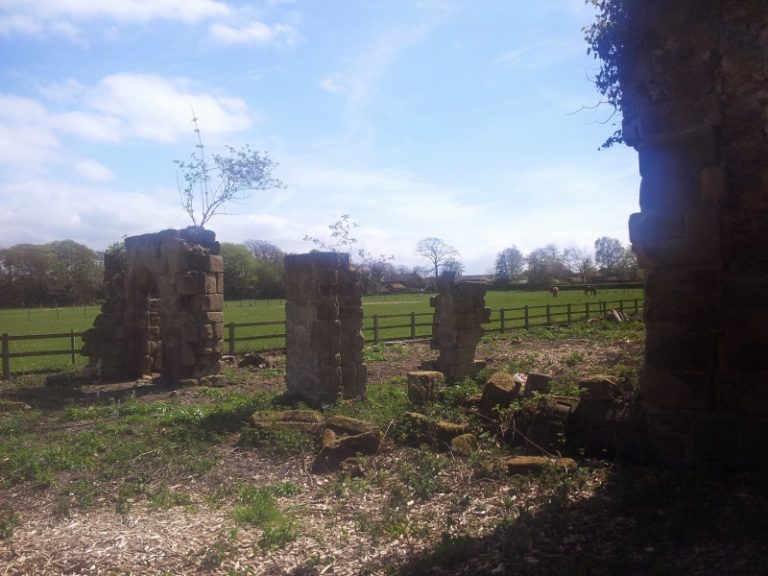
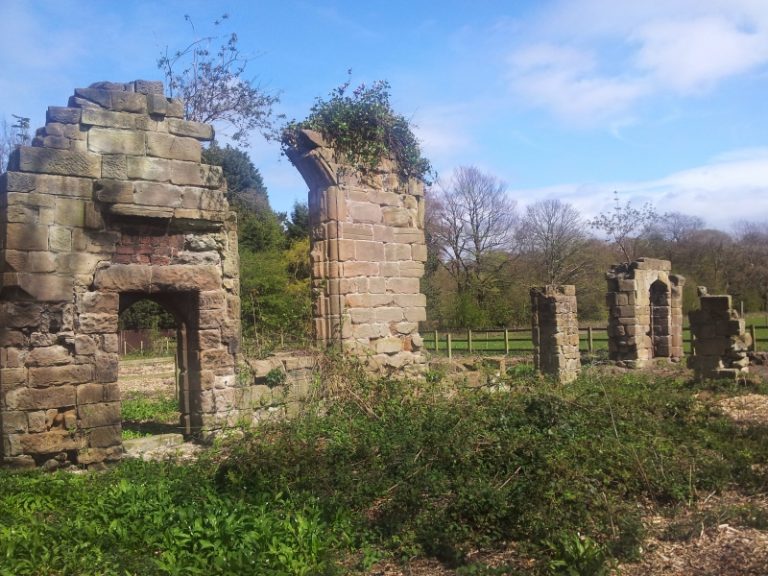
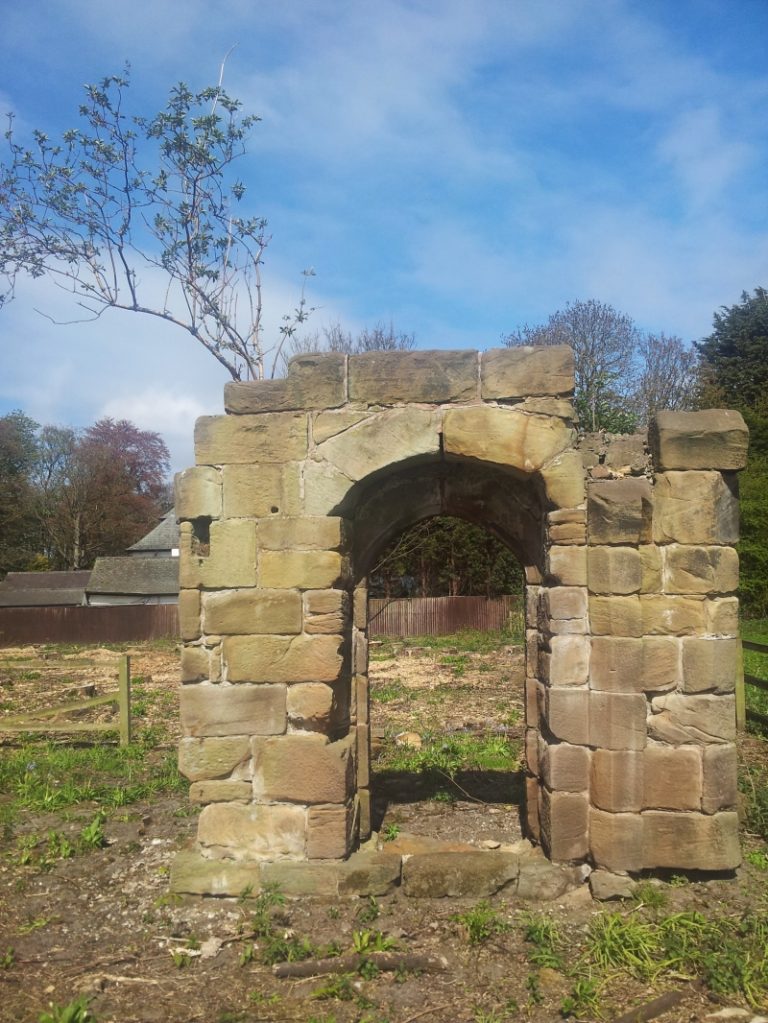
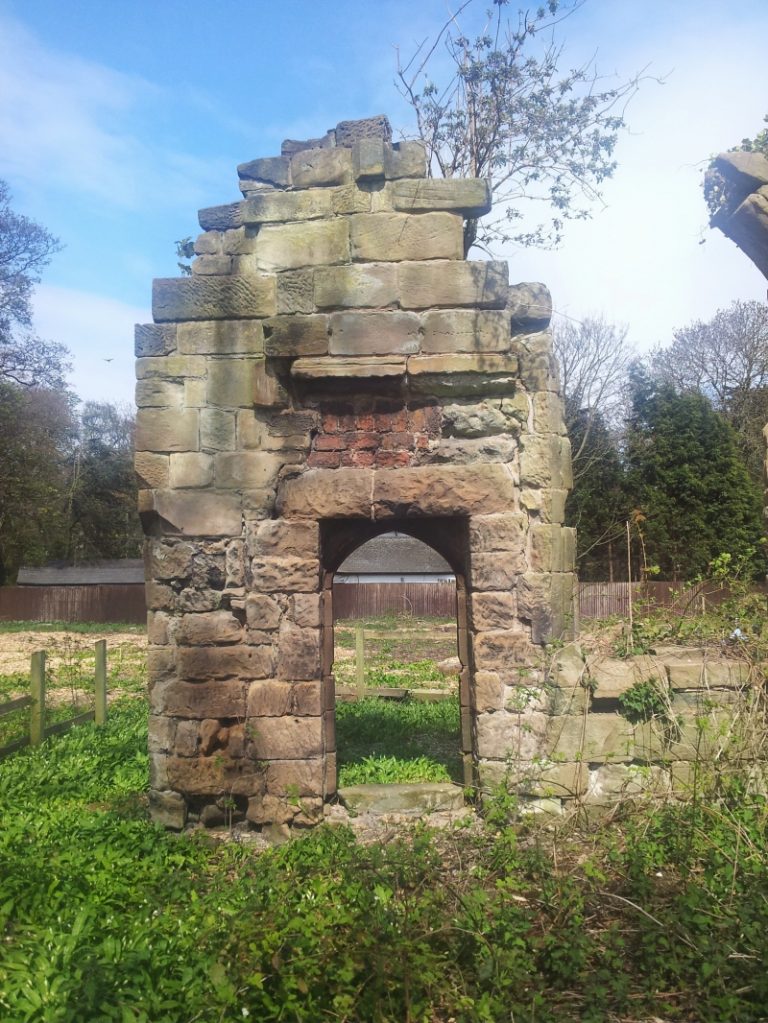
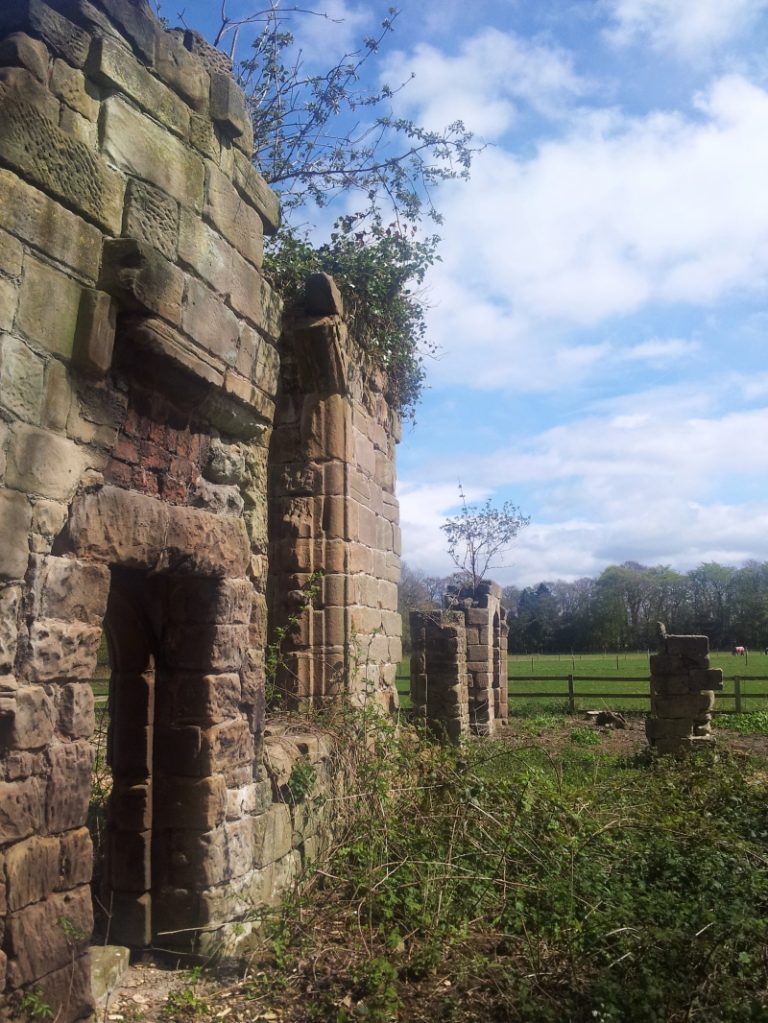
Research at University of Liverpool
Lewis, J, ‘Halsall Rectory’ in Liverpool University Archaelogy Newsletter Vol. 2, (1986) 9-10 includes a drawing of the site and describes the surving walls at that time. The report suggests these are an external wall with evidence of other internal walls which might have formed a substantial building ranged around 3 or 4 sides of a courtyard. The report also says that at the this time there was another small rectangular structure south west of the ruined wall but this is not currently visible due to the undergrowth. The report also identifies previous documentation which could be researched;
Excavations in 1964
1843 Tithe Map
Waite, J.A. 1881 Historic Houses, Churches and other Architectural Antiquities of County of Lancashire, Hundred of West Derby Vol 3 ( Liverpool Record Office)
Taylor, H & Radcliffe, R. 1896, Notes on parish and church of Halsall THSLC 48 NS 12 192-232
Farrer, W. & Brownbill, J.A 1907, Victorian History of the County of Lancaster Vol 3
Halsall Rectory by J.Lewis
1841 Census
The 1841 census for Halsall does not identify specific buildings. Reverend Richard Loxham (Biography) was the Rector of St. Cuthbert’s church between 1816 and his death in 1843 but he was also the minister of St. John’s church in Liverpool city centre. He has an entry in 1841 Census for Halsall with his wife, 4 daughters and 5 assumed servants. It is possible that this was the medieval rectory but we also know that this building was “ruins” by 1852.
1852 Southport Visitor

This extract from the 18th June 1852 Southport Visiter was taken from the ‘Old Mersey Times’ website. It refers to passing ‘Halsall Priory in park like grounds’ (which must have been Rectory 2 at Halsall House) and ‘preserved ruins of an ancient priory formerly existing there’ (the ruins of Rectory 1).
1896 Taylor & Radcliffe Notes on the Parish and Church of Halsall
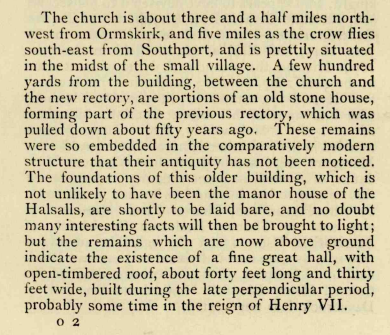
‘Notes on the Parish and Church of Halsall‘ by Henry Taylor and R.D Radcliffe (1896) reports that an old stone house , a previous rectory, was pulled down about 50 years ago which would support other references to Rectory 1 becoming ruined contemporary with the building of Rectory 2.
The article goes on to suggest that the foundations may be a manor house of the Halsall family with a great hall probably built at the time of Henry VII (1457-1509). Modern archaelogical reports suggest that there are 14th/15th century stonework features in the ruins.
2004-2014 Lancshire County Council Historic Environment Team
In 2021 the Church Commisisoners sold the woodland containing the ruins to the Moores family who owned the adjacent house “Greenways”
Currently (2025) the site is heavily overgrown, privately owned, is securely fenced and not open to the public.
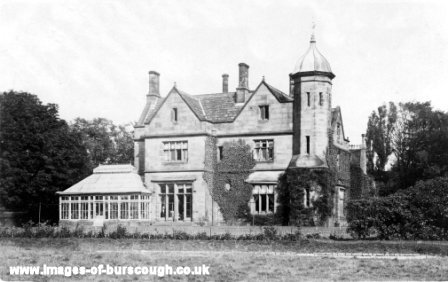
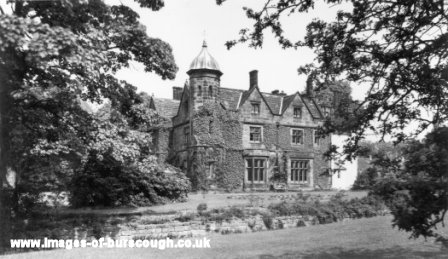
Rectory 2 at Halsall House
This house was built by Sydney Smirke c. 1847-50 for the Blundell family, possibly to replace the ruins to the South West. (Building described at British Listed Buildings and Historic England ). Richard Benson Blundell [MC34-DZ6] was the senior member of the Blundell family in 1851 living in West Derby, Liverpool. He died in 1853.
In 1851 Census, the first recorded residents of Rectory 2 were Rev. Richard Leigh [MC37-48C] (Biography) his wife Sarah [MC37-482] and 4 children. The family also had 10 servants in the house. The address was Cross Lane at this time, now Halsall Road.
In 1861 Census , Rev. Richard Leigh and his family of 7 children were still living at the Rectory with 10 servants.
In 1871 Census, Rectory House was recorded as the home of Rev. Thomas Blundell , his wife Adelaide Fanny Ashworth Astley [M6P8-WYR] and daughter Muriel Blundell. There were 3 family visitors and 9 servants althought some may have been accompaning the visitors.
In 1881 Census, the Rectory House family had increased to Rev. Thomas Blundell, Adelaide, 4 children and 12 servants excluding a visitor, Mrs Fitzroy and her servant.
In 1891 Census , Rev Thomas Blundell had 6 family members, 5 visitors and 11 servants living at the Rectory.
In 1901 Census , Rev. Thomas was a widower, living in the Rectory with his daughter Ethel and 8 servants. He died in 1905 and his son Cuthbert Blundell [MM1V-SQ4] took over Halsall Rectory and renamed it Halsall House as they had acquired a plot of land for a new rectory nearer the church.
In 1911 Census, Halsall House has only 3 servants recorded, there is a note to show “Family Abroad”
In 1921 Census, two Blundell children, Bridget (13) and Elizabeth (5) were the primary residents of Halsall House, with 11 servants including a Governess .
After 1921 Census, Halsall House was purchased by the Cope family, of Copes Brothers, manufacturers of tobacco products of Liverpool .
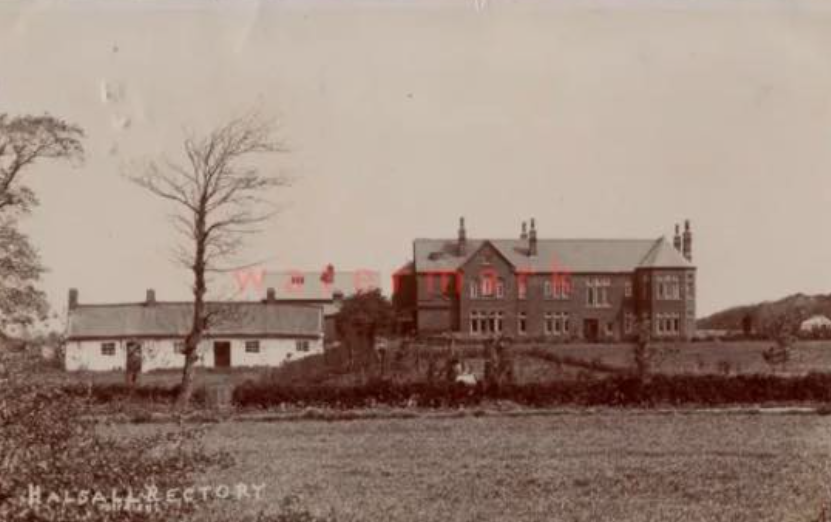
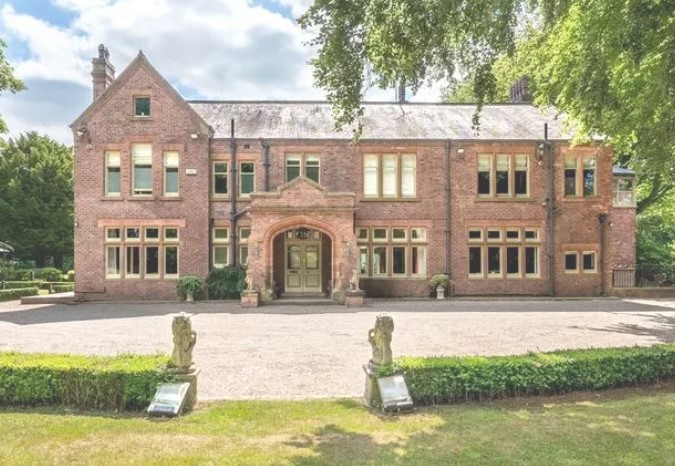
Rectory 3 now known as Old Rectory
In 1905 Colonel Henry Blundell transferred 5 acres of land to Rev. Thomas Blundell, part of Gesterfield, to become the plot of land for the “new” Rectory 3. The remaining 7 acres became Halsall Recreation ground.
A postcard sent in 1908 shows the orginal design of the building, shortly after its completion. Significant changes were made in 1959 according to a booklet on Halsall published by Cannon Bullough (Biography).
The list of Rectors for St Cuthberts church does not align with the Census records for the Rectory.
Rev. James Gerard Leigh [GL7N-RTM] became the Rector in 1906 but the 1911 Census shows the resident as Rev. Edward Leigh Mather [GKHZ-MPK] , a cousin of the late Rev. Thomas Blundell and a future Rector from 1928 onwards. Rev. James Leigh was in a hospital in Dumfries in the 1911 Census for Scotland , he had a son who lived in Moffat.
Similarly in 1921 Census, the residents of Halsall Rectory were Thomas and Mary Craven , employed as Gardener and Cook by Rev. E.L. Mather of Halsall Rectory. However Rev. Edward Mather was in Seascale, Cumberland in 1921 with his wife Sophia and 2 children. He was employed as Curate in charge of Halsall.
The Rector was often assisted by one or more Curates, other “Clerks in Holy Orders”, which is the typical description of the profession in Census returns. In 1921 there was another “Clerk in Holy Orders”, Rev. Sydney Manifold Rawland who was living at Chestnut Cottage, Summerwood Lane whose employer was “Halsall”.
Checking Chestnut Cottage shows that it was also occupied by a Curate in 1911, a Rev. John Inglis with his wife and daughters one of whom was born in Halsall in 1909.
Rev. James Leigh died on 27th February 1921, in Gosforth, Cumberland, the 1921 Census was 19th June 1921, and the next Rector of St Cuthbert’s church was Rev. George Hardwicke Spooner [MQ7N-8BY] who was not appointed until 17th August 1921 so that might explain why there was no Rector in residence at the time of the 1921 Census and there were two Curates, Edward Mather and Sydney Rawland.
Rev. Edward Leigh Mather (Biography) was appointed Rector from 8th December 1928 until 1946 and he died in 1952. He was the nephew of the earlier Rev. James Leigh ( Rector in 1906) and grandson of Rev. Richard Leigh ( Rector in 1851 and 1861 Census) as well as being related to Rev. Thomas Blundell (Rector in 1871 to 1901 Census).
The Rev. Charles Robert Claxton (G26G-385) ( Biography) , was the Rector of Halsall from 1948 to 1959. He was also the Bishop of Warrington and he gave this title to the Bishop’s Walk landmark in Halsall.
We are have biography articles on most of the recent Rectors of St Cuthbert’s church.
In 1999 the Church Commissioners sold The Rectory. The Rector at the time, Rev. Peter Goodrich lived at Gesterfield Farm House, further along Halsall Road.
In more recent times the property has been available as luxury holiday accomodation and was marketed as the “Old Rectory”, “Lancashire’s most expensive house“.